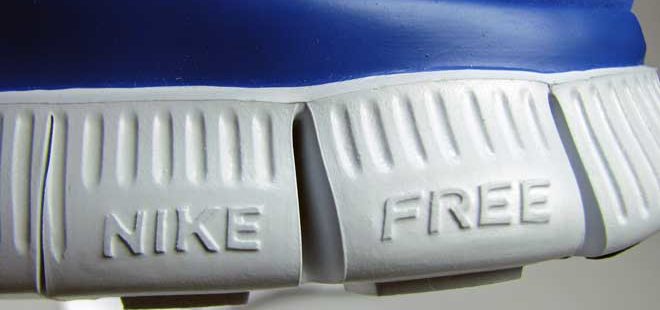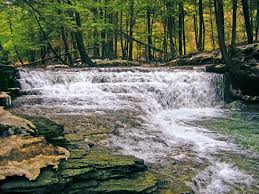Disclosure: I may earn affiliate revenue or commissions if you purchase products from links on my website. The prospect of compensation does not influence what I write about or how my posts are structured. The vast majority of articles on my website do not contain any affiliate links.
This August marks my tenth year as a bonafide runner. Over my lifetime, there has been no hobby that I have pursued with the same vigor or devotion. My truly competitive days are behind me, and I’m at the point now where I feel that I’ve reached equilibrium. What running has given to me is of the same order of magnitude as the time and energy that I’ve dedicated. There is still a possibility of my besting some of my personal records–which are pedestrian in the grand scheme of things–but I’ve fallen into a lull in which I’d rather think and write about running than actually participate.
One area of interest of mine has been minimalist shoes. After scoring my first pair of Nike Free shoes during 2010 and gradually working them into my rotation, I’ve run in them exclusively for over six years. My most recent pair was my 14th or 15th. As you can probably infer, my mileage fell off significantly following high school, but I’ve remained loyal to the shoe.
So, I’ve been around the block in Nike Frees. Several thousand times. I wore them when I ran the Steamtown Marathon. I wore them in several half-mile races around the track and even more mile road races. In hindsight, these ideas were not good ones, but they give me more credibility when talking about the advantages and limitations of the shoe.
The Nike Free was ideated when people from Nike watched their athletes running barefoot. Whether on grass or a harder surface, running barefoot forces the body into what is often described as “natural” gait. Natural meaning that, according to Born to Run, humans are the only mammals that can run long distances because we developed the joints, sweat glands, muscles, and bone structure that made us most efficient at persistence hunting. Natural: we’re built to be distance runners. We’ve evolved over millions of years to run barefoot.
Concrete is a relatively modern advancement.
The shoes that were popular when I started running were expensive, clunky, foamy, and had all kinds of solutions for problems I wasn’t quite sure I had. Problems that, many believe, are rooted in a prevalence of hard running surfaces and a populace that is overweight and/or sedentary. The reason sentiment has fluctuated between natural, cushioned, super-omega-cushioned and other fads is because it’s so hard to nail down exactly what’s causing injuries. Isn’t “overtraining” too general of a term? How can a shoe’s effectiveness in preventing injury be quantified and scientifically proven? How many expensive remedies have been prescribed to people in lieu of them being told that they simply weigh too much?
I’d like to add another anecdote to this discussion.
For most of my life, I would have been classified as a weak person. Popular opinion would lead you to believe that being a weak, thin, lanky distance runner is ideal, but that’s not entirely true. Distance runners need strength. Not as much as a sprinter, but a hell of a lot of it relative to the average sedentary person.
As a thin person who lacked strength, I destroyed the cartilage in my knees and suffered through injury after injury, mediocre performance after mediocre performance. Battling shin splints, a recurring hip problem, and, most painful of all, plantar fasciitis, one day I found myself in Dick’s Sporting Goods after practice trying on the Nike Free Runs. I yelped as I pranced around the track painted around the circumference of the shoe section. The pain was extreme, but, I thought, maybe minimalist shoes were the solution to my woes. I moved to buy the shoes and in return, the Dick’s employee told me to never start smoking cigarettes. Thanks, man.
I used the weight room and striders on soft surfaces to ease into the shoes. It took several months before any notable part of my mileage was completed in the Frees. However, even at the end of this introductory period, there were some major breakthroughs.
The Nike Frees, like wearing no shoes at all, forced me to alter my stride to something more natural. My center of gravity shifted, my heel strike disappeared, and it became easier to adjust my cadence on the fly. As I made my way through my first serious base-building phase with the minimalist shoes, I noticed that my foot muscles were highly developed. My plantar fasciitis was healed.
Into my first track season with the shoes accounting for maybe 40% of my mileage, I noticed that my calf muscles had become incredibly well defined. Despite training with the distance runners and spending little time in the weight room, I was able to drop down and run competitive times in the quarter-mile and half-mile. I actually ran some races in the Frees to alleviate various superstitions, but they simply didn’t compare with a pair of spikes.
During base training for my senior year of Cross Country, Brooks released a version of the Ghost (my daily driver) that was too stiff through the arch. I felt plantar fasciitis creeping back, so I finally turned to the Nike Free as my main shoe. Gradually, I discovered some drawbacks.
When the majority of your mileage is on hard surfaces (as my in-season training was), running in minimalist shoes really wears out your muscles and joints. Where I saw a huge benefit to being forced to change my form and learn to run with less of a heel strike, my body started to break down as I ramped up mileage. There would be more soreness–everywhere–and eventually, there was less spring to my step. It’s easier to identify these things in retrospect, because, at the time, I probably convinced myself that I just wasn’t training hard enough. The truth is that I didn’t have any strong performances (mostly mediocre times in the high 17s for 5k) and there isn’t a single picture of me running that season where I don’t look uncomfortable in my own body and in some type of pain. Ironically, the shoe that granted me a unique level of strength when used in moderation took it away from me when used in excess.
I went away to college and stopped running. I still loved the Nike Frees (or whatever they were called at that point) and wore them whenever I wasn’t rocking boat shoes. The interesting effect this had is that, even after I put on the freshman fifteen, I still had the lower leg strength and stability to knock out competent runs from time to time.
Between my junior and senior years, I decided that I would run the Steamtown Marathon in the coming fall. I took a new approach to base-building. Instead of running dozens of junk miles at a slow pace, I would wear the Frees and run three miles a day at an average pace of 6:45. I felt great even though the miles were all run on pavement. In the fall, I did 100% of my mileage in the Frees (which was a subconscious decision at that point) with 95% of the mileage being on dirt paths. I never tracked pace, had no workouts, and followed no training log, though I’m sure I hit a fifty-five-mile week and a twenty-something mile long run. During these runs, equipped with “man strength,” I felt so fluid and in control that I briefly considered trying out for the Track team in the Spring. I barely felt pain and considered injuries a thing of the past.
The marathon was on pavement. I hit the wall around mile twenty, but it wasn’t a feeling of exhaustion. Rather, my bones and joints felt terrible. I hadn’t even thought twice about it. Talking to some running friends after the race, they were shocked that I had run in the Frees. I guess I had a soft spot for my miracle shoes at that point, but they aren’t built for marathons. They certainly aren’t built for marathoning on pavement. After the race, I was doubting whether humans really were born to run.
Recently, I hit my first twenty-five-mile week since marathon training. It really hurt. I’m heavier now and more sedentary than ever. Aside from excruciating shin pain, the strong muscles that used to feature prominently in my feet atrophied and left me with sharp pain throughout. This pain persisted even as I walked around my house barefoot for more than four days. Maybe this was just my body adjusting to being close to the ground, or perhaps my body contending with rock bottom. As I looked down at my feet and saw the aforementioned 15th pair of Nike Frees, I realized that it was probably time to buy a pair of regular trainers.




Pingback: Adidas Ultraboost shoes are overrated | Tim O'Hearn()